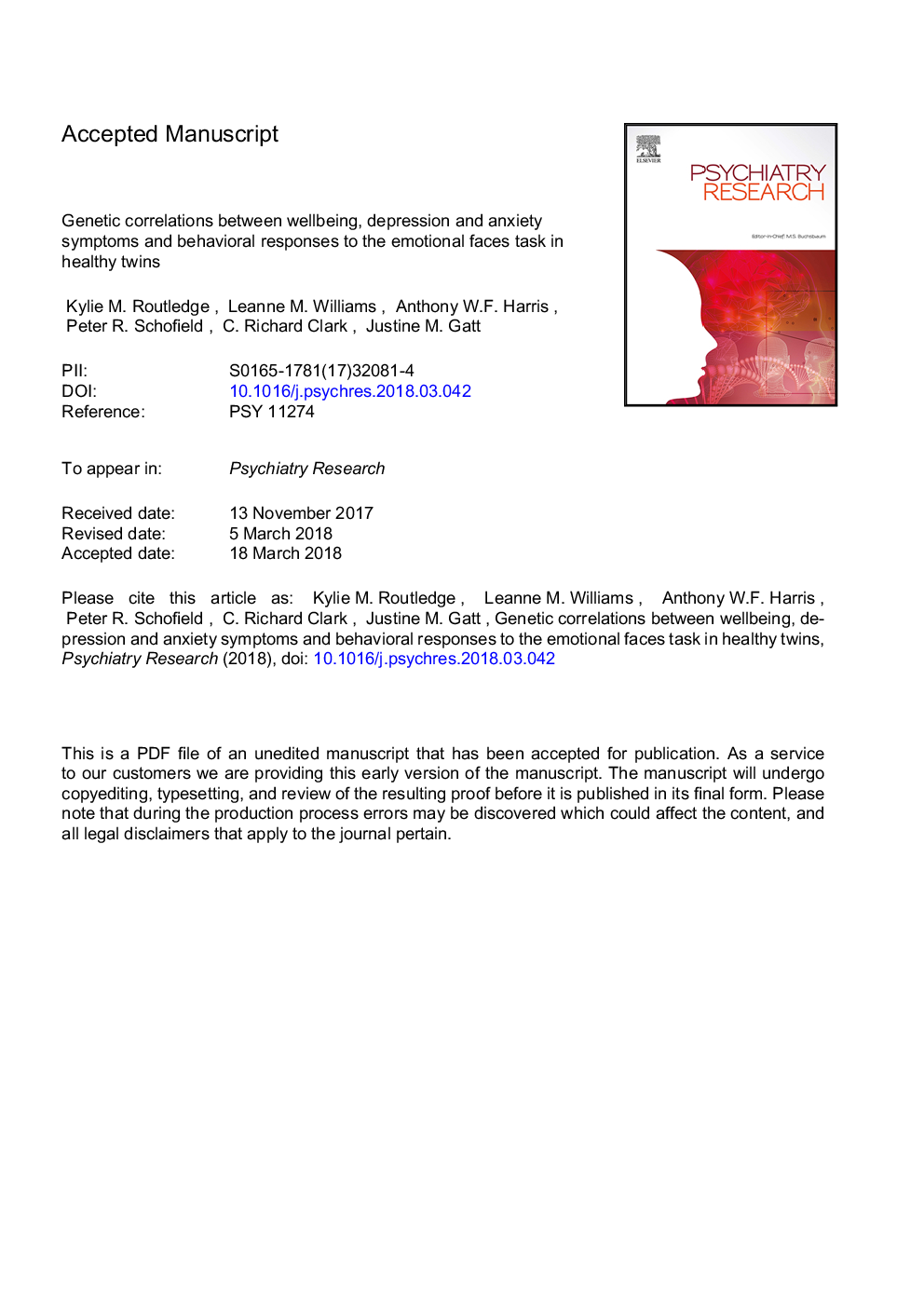ترجمه فارسی عنوان مقاله
همبستگی ژنتیکی بین سلامتی، افسردگی و علائم اضطراب و پاسخ های رفتاری به چهره های عاطفی در دوقلوهای سالم
عنوان انگلیسی
Genetic correlations between wellbeing, depression and anxiety symptoms and behavioral responses to the emotional faces task in healthy twins
| کد مقاله | سال انتشار | تعداد صفحات مقاله انگلیسی |
|---|---|---|
| 131211 | 2018 | 41 صفحه PDF |
منبع

Publisher : Elsevier - Science Direct (الزویر - ساینس دایرکت)
Journal : Psychiatry Research, Volume 264, June 2018, Pages 385-393
ترجمه چکیده
در حال حاضر درک بسیار محدودی از اینکه چگونه علائم اضطراب و افسردگی با رفتار پردازش احساسی مرتبط است، چگونه است. برای اولین بار، این انجمن ها را با استفاده از یک کار عاطفی رفتاری عبارات مثبت و منفی در 1668 بزرگسال دوقلوهای سالم بررسی کردیم. نتایج مدل های ترکیبی خطی نشان داد که زمان واکنش سریع تر نسبت به عبارات شاد چهره با نمره های بالاتری از سلامت همراه است و زمان واکنش آهسته تر با نمرات افسردگی و اضطراب بیشتر است. مدلسازی دوقلو چند متغیره ارتباط معنی داری ژنتیکی بین افسردگی و علائم اضطراب و زمان واکنش را نسبت به عبارات شاد چهره نشان داد، در حالی که هیچ ارتباطی با سلامت وجود نداشت. همچنین ما یک رابطه معنادار منفی فنوتیپی بین افسردگی و علائم اضطراب و دقت برای شناسایی احساسات خنثی پیدا کردیم، اگر چه ارتباطات ژنتیکی یا محیطی در مدل چند متغیره قابل توجه نبود. به طور کلی، روابط فنوتیپی بین سرعت تشخیص عبارات خوشحال کننده صورت و سلامت از یک طرف، در برابر افسردگی و علائم اضطراب از سوی دیگر، در جهت مخالف بودند. مدل سازی دوقلو یک رابطه کوچک ژنتیکی مشترک بین پاسخ به چهره های شاد و افسردگی و علائم اضطراب را به تنهایی نشان داد، که نشان می دهد که علائم رضایت بخش و افسردگی و اضطراب، روابط مستقل با پردازش احساسات در سطح رفتاری را نشان می دهد.

